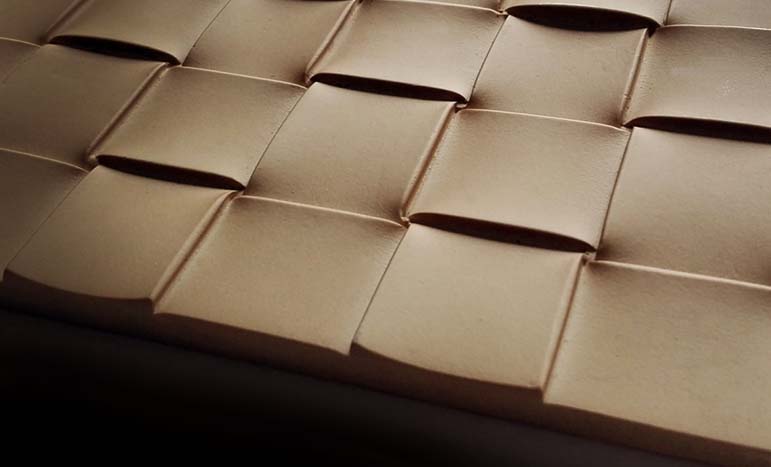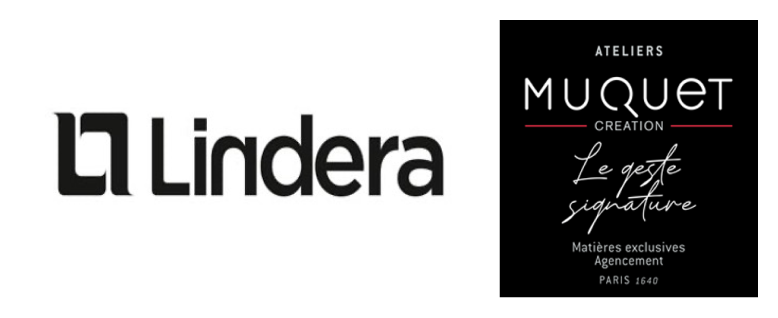For several years now, we have been developing custom designs, sometimes drawing inspiration from production techniques that are very different from our own. “Woven”, “braided” and “knitted” effects have become focuses for our team’s research and analysis.

In the design field, textiles are commonly used for tapestry and trimmings as stretched wall coverings, drapes, and carpets. A textile is generally composed of warp threads and weft threads that are woven on a loom. The various weaving methods for these threads, and the thread colors that are selected, make it possible to obtain a wide range of patterns, which can be geometric, rhythmic, or random. We explore this diversity in woven effects and reinterpret them by developing new techniques, without looms to control the process.

How do we transform a usually soft textile into a rigid decorative panel that can be cut, thermoformed, and crafted using our design tools?
We have fine-tuned several techniques that allow us to adjust the scale, texture, and pattern of a weave. We hand weave pieces of leather, lengths of string, plastic strips, linen or cotton threads, pieces of solid wood, and such. We also modify textiles, crafting surfaces digitally or even creating modeling tools that reproduce the effect of a textile.

All these materials are available to view by appointment at our workshops in Carrières-sur-Seine.
Take a look at our other creations on our website and social media accounts. #SavoirFaire #KnowHow #MadeInFrance #Workshop #Creation #History


